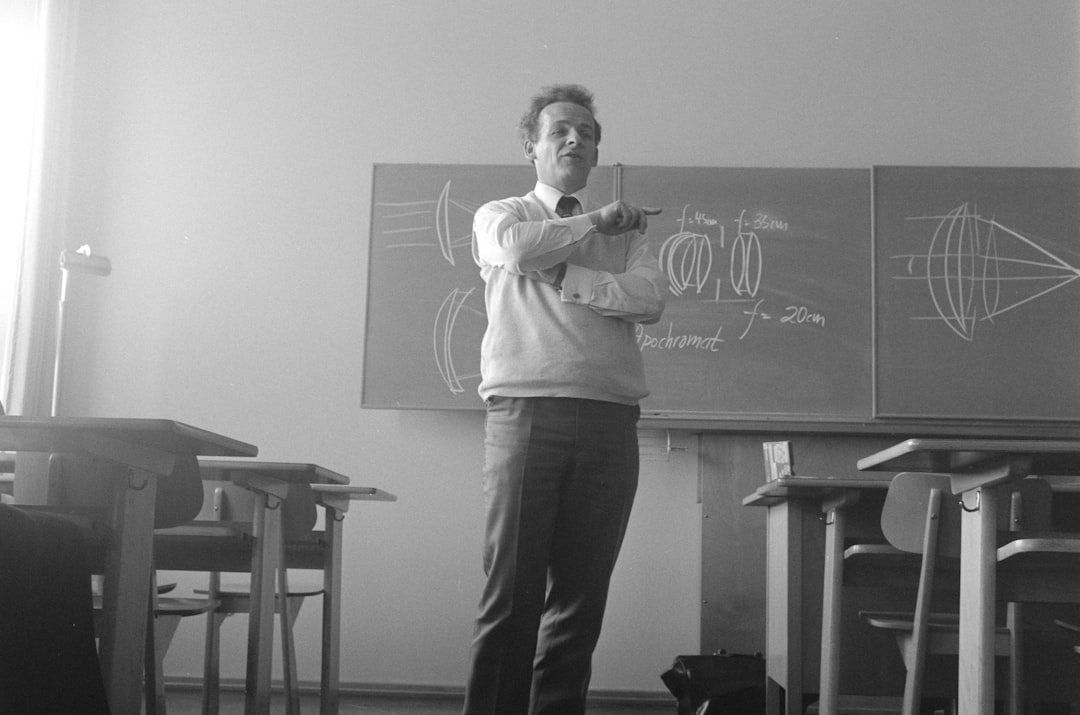As you navigate the landscape of modern education, you may have noticed a significant shift towards the integration of artificial intelligence (AI) in various learning environments. This rise of AI in education is not merely a trend; it represents a fundamental transformation in how knowledge is imparted and absorbed. From personalized learning experiences to intelligent tutoring systems, AI is reshaping the educational framework, making it more adaptive and responsive to individual student needs.
You might find it fascinating to see how AI technologies are being employed to analyze student performance data, allowing educators to tailor their teaching strategies accordingly. Moreover, the proliferation of online learning platforms has accelerated the adoption of AI tools. These platforms utilize algorithms to recommend resources, track progress, and even predict future performance based on historical data.
As you engage with these technologies, you may realize that they offer unprecedented opportunities for both students and educators. The ability to harness vast amounts of data to inform teaching practices is a game-changer, enabling a more nuanced understanding of student learning patterns. This evolution signifies not just a technological advancement but a paradigm shift in educational philosophy, where the focus is increasingly on personalized learning pathways.
Key Takeaways
- AI is becoming increasingly prevalent in education, revolutionizing the way students learn and teachers teach.
- Teachers play a crucial role in utilizing technology and guiding students in the digital age.
- AI offers advantages such as personalized learning, instant feedback, and access to vast amounts of educational resources.
- However, AI also has limitations, including the inability to fully understand human emotions and the potential for bias in algorithms.
- AI has the potential to impact teaching methods by enabling more efficient and effective instruction.
The Role of Teachers in the Digital Age
In this digital age, your role as a teacher is evolving in ways that may challenge traditional notions of pedagogy. While AI can provide valuable insights and support, it cannot replace the unique human qualities that you bring to the classroom. Your ability to inspire, motivate, and connect with students on an emotional level remains irreplaceable.
As you adapt to new technologies, your role may shift from being the primary source of information to that of a facilitator or guide, helping students navigate the wealth of resources available to them. Furthermore, the integration of AI into education allows you to focus more on fostering critical thinking and creativity among your students. With AI handling administrative tasks and providing personalized feedback, you can dedicate more time to engaging discussions and collaborative projects.
This shift not only enhances the learning experience but also empowers you to cultivate a classroom environment that encourages exploration and innovation. As you embrace these changes, you may find that your influence as an educator becomes even more profound, as you guide students through the complexities of an increasingly digital world.
The Advantages of AI in Education

The advantages of AI in education are manifold, offering both students and educators a range of benefits that can enhance the learning experience. One of the most significant advantages is the ability to provide personalized learning experiences tailored to individual student needs. As you observe your students’ progress, AI can analyze their strengths and weaknesses, allowing for customized lesson plans that cater specifically to their learning styles.
This level of personalization can lead to improved engagement and retention, as students feel more connected to the material being presented. Additionally, AI can streamline administrative tasks, freeing up valuable time for educators like yourself. By automating grading and providing instant feedback on assignments, AI allows you to focus on what truly matters: teaching and mentoring your students.
This efficiency not only enhances your productivity but also contributes to a more dynamic classroom environment where you can spend more time interacting with students and less time on paperwork. As you leverage these advantages, you may find that your teaching becomes more effective and fulfilling.
The Limitations of AI in Education
| Limitation | Description |
|---|---|
| Dependence on Data Quality | AI in education relies heavily on the quality and quantity of data available for analysis and learning. |
| Lack of Emotional Intelligence | AI may struggle to understand and respond to the emotional and social needs of students, which are crucial in education. |
| Difficulty in Personalization | AI may face challenges in providing truly personalized learning experiences for each student, as it may not fully understand individual learning styles and needs. |
| Ethical and Privacy Concerns | The use of AI in education raises concerns about data privacy, security, and the ethical implications of using AI to make decisions about students. |
| Cost and Access | Implementing AI technology in education can be costly, and there may be disparities in access to AI-powered educational tools and resources. |
Despite its many advantages, AI in education is not without its limitations.
As you incorporate AI tools into your teaching practices, it is essential to remain vigilant about fostering these skills among your students.
While AI can provide answers and solutions, it cannot replicate the human capacity for creativity and innovation that arises from grappling with complex problems. Moreover, there are ethical considerations surrounding data privacy and security that must be addressed as AI becomes more prevalent in educational settings. You may find yourself grappling with questions about how student data is collected, stored, and used by AI systems.
Ensuring that these systems are transparent and secure is crucial for maintaining trust between educators, students, and parents. As you navigate these challenges, it becomes clear that while AI can enhance education, it must be implemented thoughtfully and responsibly.
The Impact of AI on Teaching Methods
The impact of AI on teaching methods is profound and multifaceted. As you explore new pedagogical approaches, you may find that AI encourages a shift towards more interactive and engaging learning experiences. For instance, adaptive learning technologies can adjust content delivery based on real-time assessments of student understanding, allowing for a more fluid and responsive teaching style.
This adaptability can lead to increased student motivation and participation as they feel empowered to take charge of their own learning journeys. Additionally, AI can facilitate collaborative learning experiences by connecting students with peers across the globe. Through virtual classrooms and online discussion forums powered by AI algorithms, you can create opportunities for cross-cultural exchanges and collaborative projects that enrich the educational experience.
As you embrace these innovative teaching methods, you may discover new ways to engage your students and foster a sense of community within your classroom.
The Ethical Considerations of AI in Education

As you delve deeper into the integration of AI in education, ethical considerations become increasingly important. One pressing issue is the potential for bias in AI algorithms, which can inadvertently perpetuate inequalities in educational outcomes. It is crucial for you as an educator to critically evaluate the tools you use and ensure that they promote equity rather than exacerbate existing disparities.
By advocating for inclusive practices and diverse representation in AI development, you can help create a more equitable educational landscape. Another ethical concern revolves around data privacy and security. As AI systems collect vast amounts of data on student performance and behavior, safeguarding this information becomes paramount.
You must be vigilant about how data is used and shared, ensuring that student privacy is respected at all times. By fostering an environment of transparency and accountability regarding data practices, you can build trust with your students and their families while navigating the complexities of AI in education.
The Potential for AI to Enhance Teaching
The potential for AI to enhance teaching is vast and exciting. As you explore various applications of AI in your classroom, you may discover tools that can provide real-time feedback on student performance or even simulate complex scenarios for experiential learning.
Moreover, AI can assist in identifying at-risk students who may need additional support or intervention. By analyzing patterns in student data, AI systems can alert you to those who may be struggling academically or emotionally. This proactive approach allows you to intervene early and provide targeted assistance, ultimately improving student outcomes.
As you harness the potential of AI in your teaching practice, you may find that it empowers you to be more effective in meeting the diverse needs of your students.
The Importance of Human Connection in Education
While AI offers numerous advantages in education, it is essential not to overlook the importance of human connection in the learning process. As an educator, your ability to build relationships with your students plays a crucial role in their academic success and emotional well-being. The empathy, understanding, and encouragement that you provide cannot be replicated by machines; they are fundamental components of effective teaching.
In an age where technology often dominates interactions, fostering genuine connections with your students becomes even more vital. You have the unique opportunity to create a supportive classroom environment where students feel valued and understood. By prioritizing these relationships alongside technological advancements, you can ensure that education remains a deeply human endeavor—one that nurtures not only intellectual growth but also social-emotional development.
The Future of AI in the Classroom
As you look towards the future of AI in the classroom, it is clear that this technology will continue to evolve and shape educational practices in unprecedented ways. You may envision classrooms where AI-driven tools seamlessly integrate into daily lessons, providing real-time insights into student engagement and comprehension levels. This future holds promise for creating even more personalized learning experiences that cater to each student’s unique needs.
However, this future also requires careful consideration of how technology will coexist with traditional teaching methods. As an educator, your role will be crucial in guiding this integration thoughtfully and responsibly. By staying informed about emerging trends in AI and actively participating in discussions about its implications for education, you can help shape a future where technology enhances rather than detracts from the learning experience.
The Skills and Qualities that AI Cannot Replace
Despite the advancements in AI technology, there are certain skills and qualities that remain uniquely human—attributes that machines cannot replicate or replace. Your ability to empathize with students, understand their emotions, and respond with compassion is irreplaceable in an educational setting. These interpersonal skills foster trust and rapport between you and your students, creating a safe space for learning.
Additionally, critical thinking and creativity are inherently human traits that cannot be automated by AI systems. While machines can analyze data and provide solutions based on algorithms, they lack the capacity for original thought or innovative problem-solving that arises from human experience. As you cultivate these skills within your students, you empower them to think independently and approach challenges with creativity—qualities that will serve them well beyond the classroom.
Finding a Balance between AI and Human Teachers
In navigating the intersection of AI and education, finding a balance between technology and human teachers is essential for creating an effective learning environment. As you incorporate AI tools into your teaching practice, it is important to remember that these technologies should complement rather than replace your role as an educator. Striking this balance allows you to leverage the strengths of both human interaction and technological innovation.
To achieve this balance, consider integrating AI tools thoughtfully into your curriculum while maintaining a strong emphasis on relationship-building with your students. Encourage open discussions about technology’s role in education and involve students in exploring how they can use these tools responsibly. By fostering a collaborative approach between AI and human teachers, you can create a dynamic educational experience that prepares students for success in an increasingly digital world while preserving the essential human elements of teaching.
In the ongoing debate about whether AI will replace teachers, it’s essential to consider the broader implications of technology on various professions. An insightful article on this topic can be found on How Wealth Grows, which explores the intersection of AI and employment. The article discusses how AI is transforming industries and the potential for job displacement, including in education. For a deeper understanding of how AI might impact teaching roles, you can read more about it on their website. This resource provides a comprehensive analysis of the evolving job market and the skills that will be in demand in the future.
FAQs
What is AI?
AI, or artificial intelligence, refers to the simulation of human intelligence in machines that are programmed to think and act like humans. This includes tasks such as learning, problem-solving, and decision-making.
How is AI being used in education?
AI is being used in education to personalize learning experiences, automate administrative tasks, provide tutoring and support, and improve educational outcomes through data analysis and predictive modeling.
Will AI take the jobs of teachers?
While AI has the potential to automate certain tasks in education, such as grading and administrative work, it is unlikely to fully replace the role of teachers. Instead, AI is more likely to augment and support teachers in their roles, providing personalized learning experiences and freeing up time for more individualized instruction.
What are the potential benefits of AI in education?
The potential benefits of AI in education include personalized learning experiences, improved student outcomes, more efficient administrative processes, and the ability to identify and address learning gaps.
What are the potential challenges of AI in education?
Challenges of AI in education include concerns about data privacy and security, the potential for bias in algorithms, the need for teacher training and support in using AI tools, and the potential for job displacement among educators.
